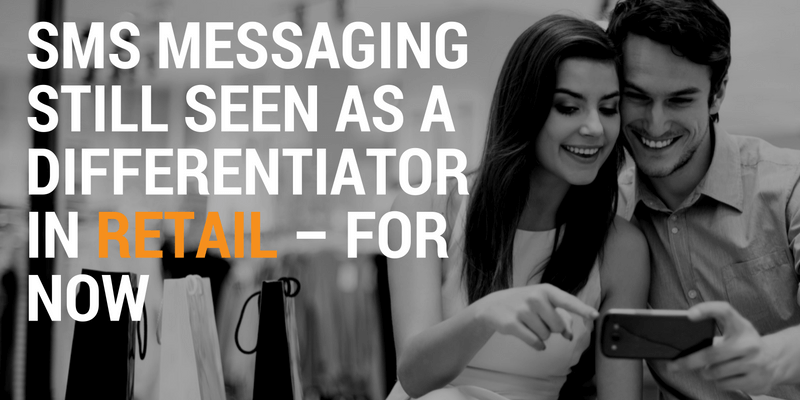Email vs. SMS Revisited

The digital marketing age has really given us so many options when it comes to running campaigns. If you Google “digital marketing channels”, you’ll get article after article about which ones work the best. Of course, most of them won’t completely agree.
One of the most common though, and longest standing, is email. It’s a channel marketers know well, it’s relatively inexpensive, and is easily measurable. But it suffers from the problem of overload. According to The Radicati Group, the average user in 2015 received 122 emails a day. Twelve of those were spam that made it through to their inbox. People just are desensitised to email because there is no time to read them all.
And though SMS messaging has been around for decades, it’s one of the newer forms of digital advertising resulting from the growth in mobile devices. It allows marketers to reach out and directly connect with their customers in a way email can’t. At least for now. People are still hesitant to give out their mobile number unless they have a compelling reason – usually something free or discounted.
Because of email’s issues, some marketers put less emphasis on it and may overlook it in favour of SMS. Even though we’re an SMS provider and would love to have more SMS users, the truth is it shouldn’t be one or the other. The best marketers use both.
"High performing" marketers
In the 2016 State of Marketing report from Salesforce, they divide the marketers into three groups: underperformers, moderate performers, and high performers. High performers are those that self-identify with the statement “extremely satisfied with the current outcomes realized as a direct result of their company’s marketing investment”. What they’re doing is working and they know it.
Moderate performers are just “very or moderately satisfied” with their outcomes. Underperformers are “slightly or not at all satisfied”.
Obviously if you want to see what is working in the marketing space, you’ll want to pay attention to what the high performers are doing. The Salesforce report makes a point of distinguishing which level is obtaining what kind of performance. And that’s where this is all leading… how high performers are using email and SMS.
All about email
These high performing marketers are actually seeing better returns on email than ever before. This is because they are using “Intelligent email”. They personalize emails with names, but also use other data. The report says “Top teams are 4.2x more likely than underperformers to leverage predictive intelligence or data science to create personalized emails”.
This ties into another concept, or process, of high performing marketers: 88% say that they use a “customer journey strategy”. Some marketers call it a “unified customer experience strategy”. Whatever the term used, it means the customer is the focus. The result is, based on the report, satisfied customers and marketers!
What is a unified digital front?
So what exactly is a customer journey or a unified front? Are they just the buzz words of the day or do they carry more meaning? I think they’re both. These terms, and similar ones, are tossed about quite a bit, but not always well defined. It seems in many cases it’s like the old adage about art, “I don’t know much about art, but I know it when I see it” (sometimes ends with “I know what I like” instead). Intuitively we all know what a customer journey should mean, don’t we?
Still, I wanted to put something down a little more concrete than that. I found this quote from tcworld.com that I think begins to capture it, “It’s not enough to dazzle prospects with flashy advertising and sexy marketing collateral. You have to continue to dazzle them by providing amazingly useful, relevant, and accurate content after they become customers. At every touchpoint. On every platform. Every time.”
It’s not just about content though. It includes customer support too. But perhaps that’s included in “every touchpoint”.
Mobile and SMS
All that discussion boils down to what those high performers are doing relative to SMS and mobile in general. The report says 81% percent align their email and mobile campaigns.
This doesn’t mean running the same campaigns on both channels (though it could do that too). It means cross-promoting so the customer recognises all channels the company is on. The report concludes that “With even more marketers reporting significant ROI for mobile, email, and social this year, it’s crucial to orchestrate these channels in support of a seamless customer experience”. It goes on to say, “mobile opt-in, for example, rank[s] in the top five most effective email campaign types.”
Promoting your SMS marketing opt-in via email is highly effective. And it also provides significant ROI. A customer that chooses to opt-in to both email and SMS channels is a very interested customer!
Realising that your customers are going to be interacting with you through mobile and through email gives you the opportunity to start building that unified experience. It’s well worth the effort to do so – you can tell because high performers are 1.8 times more likely to align mobile and email than underperforming teams. Which do you want to be?
Related Articles
What was the First Smartphone?
So what was the first ever smartphone available? Here we discuss whether it was the Simon from IBM back in 1992 or maybe the Ericsson GS88, or the Nokia 9000 communicator a year earlier. Whichever it's hard to imagine a world without smartphones yet almost as difficult to accept they've been around for 20 - 25 years.
Why Your Startup Needs to be Using SMS Marketing
Are startups afraid of using SMS marketing? Is it because they’re afraid of annoying customers and breaking the regulations? I don’t think so. If your startup isn’t using SMS marketing already, it’s probably because you don’t know all the facts. Find out why SMS is actually perfect for startups.
Salesforce Finds SMS Messaging a Growing Part of Mobile Marketing Strategy
What do 5,000 marketers from ten different countries say about SMS? It’s great, and we’re going to do more of it. Well, that’s the gist of the results in the Salesforce 2015 State of Marketing Report. Mobile marketing has taken a central place in most company’s strategies, and SMS is a growing part of it. Here are some key statistics from the report.
What Your Customers Want From SMS Marketing
Mobile marketing offers an unprecedented access to your customers virtually any time, anywhere. This is particularly true for SMS marketing because it is “always on”. Customers don’t have to be surfing the web, or using an app to receive messages. Instead, they see the marketing messages right alongside ones from their friends and family.
Do You Ever Unplug From Your Mobile?
While it’s undeniable technology is a growing part of our everyday lives, it may be surprising how few of us ever turn it off. Or leave it behind. Most people rarely 'unplug' from their mobile devices. This provides unparallelled opportunities for marketing, especially via SMS text messaging.
Do Your Customers Want Emoji in their SMS Messages?
Emoji are showing up everywhere. Should you be using these cute, fun, and illustrative icons in your SMS marketing? Your customers probably want you to. Around 72% of people have positive feelings about brands who use emoji. But before you get started, you’ll want to find out the details in this blog.
3 Facts about SMS Messaging in the UK
Do people really like getting SMS messages? Is it true they’re using Apps like WhatsApp instead? A recently published survey reveals those answers, and a few more. Find out the details on how SMS messaging is used and viewed in the UK in this blog.
5 SMS Myths You Shouldn’t Believe
SMS messaging is a popular topic. The growth of mobile has everyone jumping on board the SMS waggon and they all have something to say. I've compiled a list of five topics that I've seen written about that just aren't true, or at the very least are potentially misleading enough to be called myths. I'm going to try and offer some insight into why these myths exist and what the truth is, as I see it anyway!
SMS Messaging Still Seen As A Differentiator In Retail – For Now
How many retailers use SMS messaging? According to a recent survey, not that many. And that isn’t the only surprising result shared in the survey conducted by Internet Retailer. Companies large and small know how useful SMS can be. Read on to see why now is the perfect time to start.
The Truth About SMS Opt Out Rates
You’ve read all about getting subscribers, the legal and recommended guidelines, and put great offers out to your list. But people still unsubscribe. Should you be worried? Are you doing something wrong? That depends. As the saying goes, you can’t make 100% of the people happy 100% of the time. You will have opt-outs, but whether you have too many is the question you should be asking.












